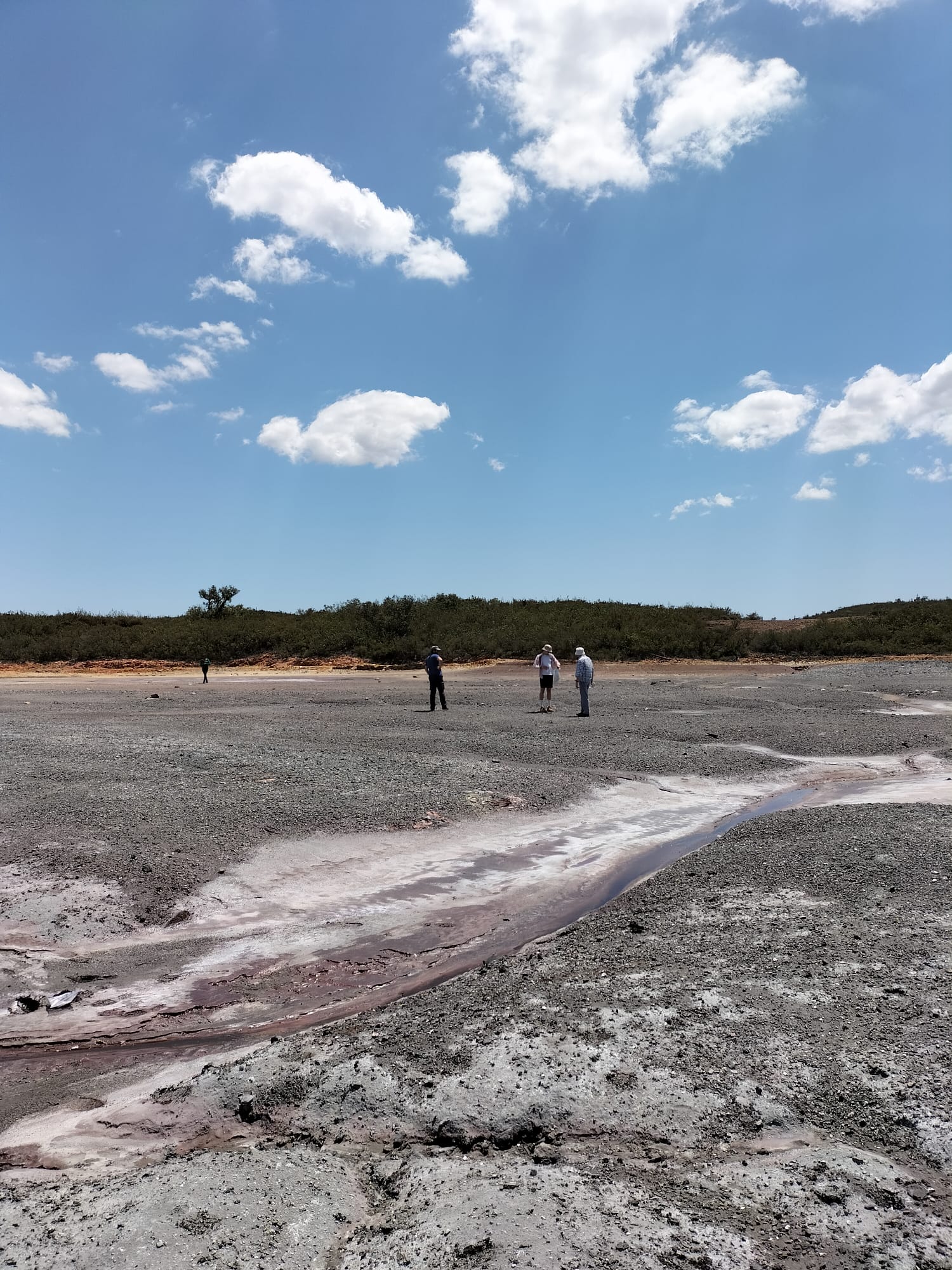Gabriel Mainieri Franco
I chose the Geo-Resources discipline due to my combined interest in geology and the desire to do something important for society. In my bachelor’s programme, there was a great focus on geology, which I welcomed. There were also a few classes in mineral sciences where I noticed the importance of the mining industry for society. The mining industry is, however, the cause of a lot of societal problems: our large energy consumption and the potential water and soil pollution coming from the waste generated from processing mined minerals. I wanted to study something to help alleviate these problems and turn mining into a more environmentally friendly industry.
Unique location
For our fieldwork, we went to the south-western region of Andalusia, Spain – the Pyrite Belt. We did most of the fieldwork in the Rio-Tinto mines area in Huelva, a millennia old mining region that has been continuously explored since the time of the Roman times. It is a very unique area, with blood-red rivers and ancient Roman ruins. The area is rich in outcrops, as the rocks have been exposed by the mining activities. This history, combined with the complex geological setting, leads to a very interesting study area!

Gabriel Mainieri Franco, student
Steps in the mining chain
We learned and observed all the steps in the mining chain, starting from the exploration stage towards the closure of a mine and rehabilitation of the area. We also learned and experienced the effects of mining on the environment and how to recognize and remediate them. The main effect on the environment in the area of Rio-Tinto was the acidification of the local river due to the mining activities. The local efforts to remediate this include limestone treatment plants that neutralize the pH of the water.
Excursions and sample collecting
Each day, we visited a different site: Atlantic Copper (copper ore processing plant), Atalaya copper (the main mine in the area). We also visited old abandoned mines and an exploration company that showed us the first steps in developing a mine (drilling and modelling), and the local mining museum.
The time we didn’t spend on excursions to sites and companies, we spent working in the field. We collected samples and used sensor technology to analyse their mineral signature from mine waste dumps, as well as discussing geological structures: how did the rocks form initially? And what geological processes did the rocks experience to get to where they are today?
It was quite an enriching experience.



